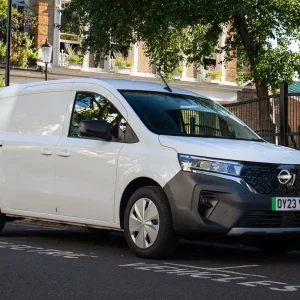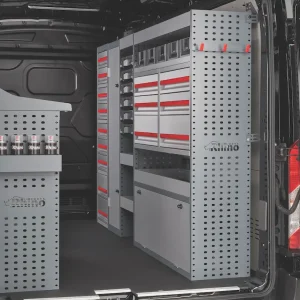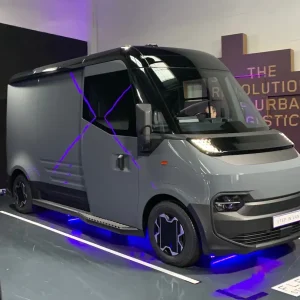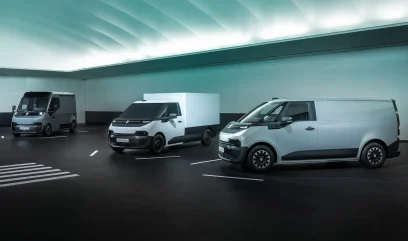
Renault says it is aiming to strengthen its position as an electric LCV pioneer with a new trio of vans.
Although branded as distinct models, the new Trafic, Goelette and Estafette are closely related. The new vans all measure 5.27m in length (when the Trafic is in L2 spec) and 1.92m in width, and are all based on the Software Defined Vehicle (SDV) platform developed by Renault Group’s EV and software company Ampere. They are also closely related to the electric van range previously unveiled by Flexis, which shares the same platform.
The new Renault vans will be available with a choice of 60kWh and 81kWh battery options, which with the Trafic will allow a WLTP range of up to around 217 miles and 280 miles respectively. The vans will be the first Renaults to feature 800V fast-charging technology, which will allow a 15-80% charge in less than 20 minutes.
The vans will also offer vehicle-to-load and vehicle-to-grid functionality, allowing them respectively to power external devices such as tools, or supply energy from their batteries to the power grid.
Renault says the vans will benefit from automatic software updates designed to ensure a long service life, and to help protect residual values.
The SDV platform is designed to offer an optimised load capacity in relation to footprint, with a minimal front overhang and rear-mounted powertrain – Renault is claiming a 10.3m turning circle for the vans, the same as its Clio small car.
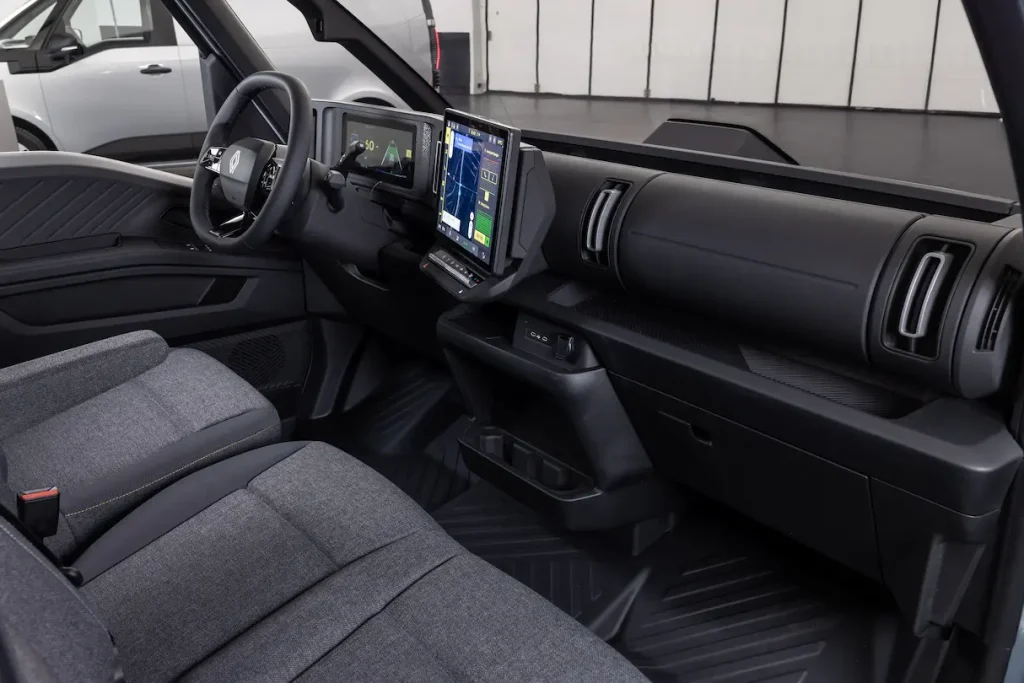
All the new vans’ interiors feature a tube-shaped dashboard design concept. The Trafic (pictured above) and Goelette feature identical interiors except for their colour scheme. The Estafette’s is similar, but with the dashboard mounted 20cm higher. The interiors feature a 10in digital instrument cluster, and a 12in central touchscreen, the latter angled towards the driver. Storage is boosted by a double-decker door bin arrangement.
The new vans are all expected to open for order in the second half of 2026. Renault has also said that we can expect to see further models spun off from the same platform. The platform is also said to be ready to accommodate a hydrogen powertrain.
Discussing the market which the new vans will be entering, Renault Group head of LCVs Heinz-Jurgen Low said: “I think we are all witnessing a severe accelerating of safety and emissions regulations everywhere, but moreover in Europe.
“For instance, we have 320 low-emission zones in European cities. That represents an increase of 40% since 2019, and more than 500 are planned in the near future.
“Moreover, 35 zero-emission zones are targeted by 2030 in Europe, and this number is expected to grow, simply because cities try to enhance their urban air quality.
“Given that [situation] our customers will expect more and more carbon neutral vehicles, that meet the highest standards to avoid accidents and downtime, [and] are always connected, delivering important information about the driver, the vehicle, or even energy management information, to reduce the total cost of usage in a very competitive business environment.”
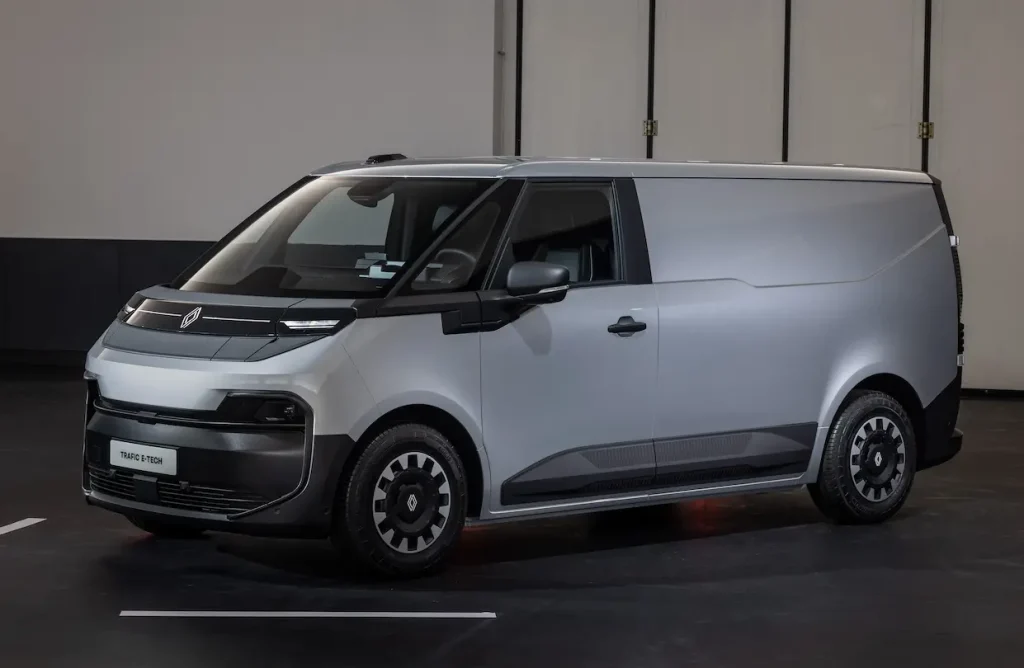
Trafic
Of the three new vans, the most familiar name to UK operators will of course be the Trafic – a model Renault has been producing since 1980 across three previous generations. The new Trafic will replace the current Trafic E-Tech, and will be sold alongside the current diesel Trafic, which will continue to be available.
The Trafic will come with a choice of 4.87m (L1) and 5.27m (the aforementioned L2) vehicle lengths, with load capacities of 5.1m3 and 5.8m3 respectively. A height of 1.9m is intended to allow access to underground car parks.
Features of the new Trafic’s design include a backlit Renault logo in the middle of a front ‘light strip’, a ‘triptych’ windscreen arrangement, a prominent snaking side beltline, and a 3D rear light signature.
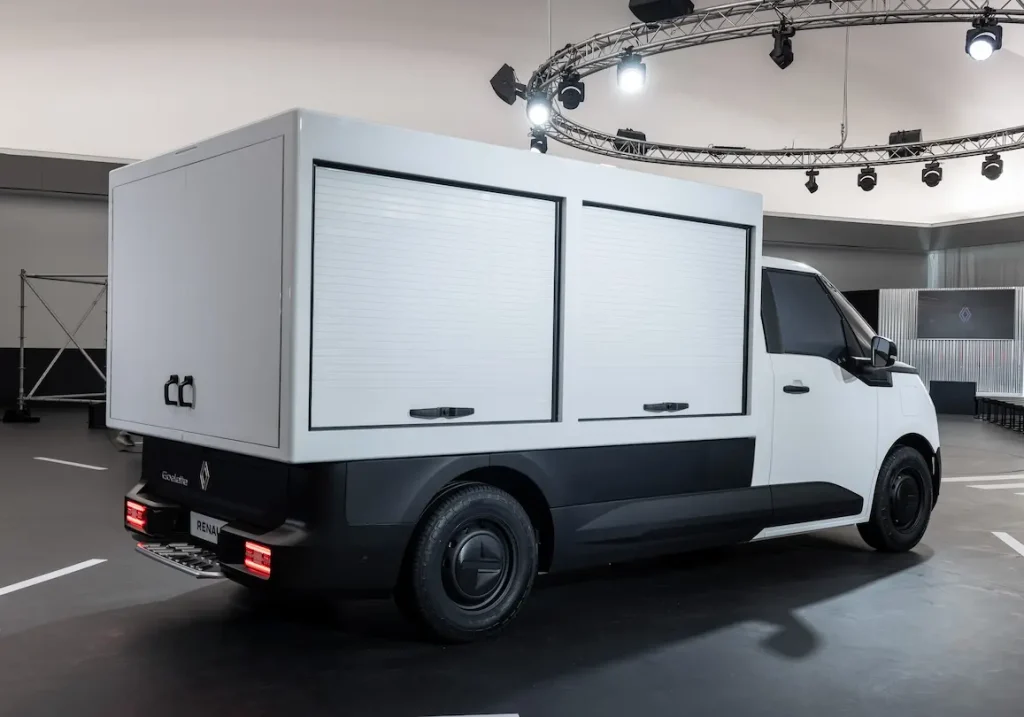
Goelette
The Goelette – a van name Renault is reviving from the 1950s – shares its dimensions and interior and exterior cab design with the Trafic. It is aimed at the conversion market – an important one for Renault, which says 50% of its LCVs are converted. Factory conversion options for the Goelette include a chassis cab, a high-volume box (capacity can be over 10m3), and an extended cab. Conversions can also be carried out by Renault-certified bodybuilders, with the chassis able to accommodate this with a load carrying capacity of up to 1.4t, thanks to reinforced axles.
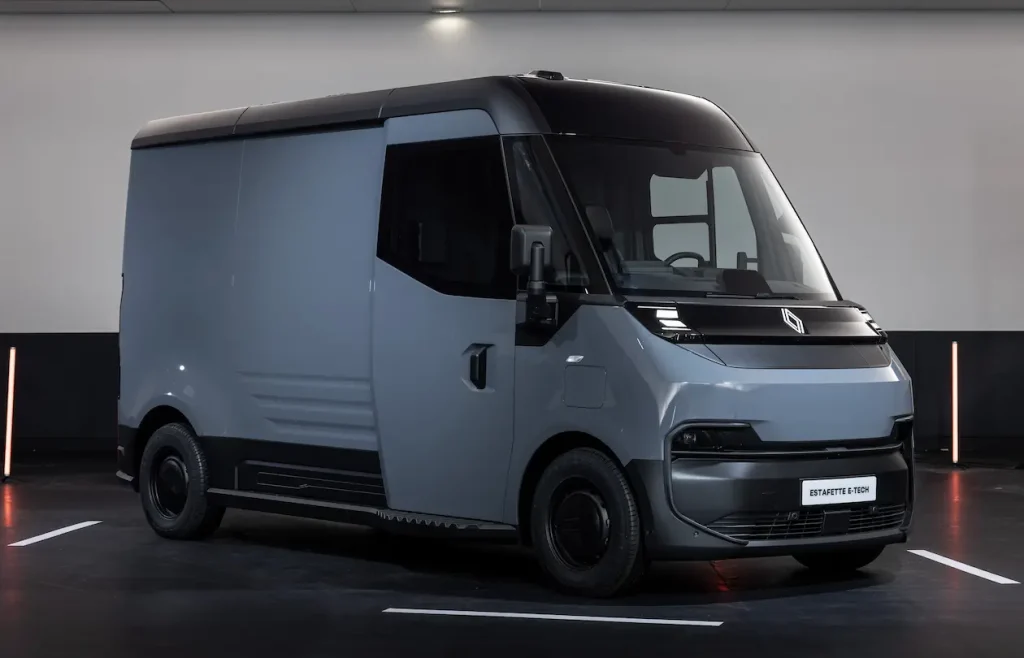
Estafette
The Estafette – a name Renault has revived from a previous model produced between 1959 and 1980 – is the step-in van option from the new range, designed with last-mile deliveries in mind and expected to be operated by medium-to-large fleets. With a vehicle height of 2.6m, it’s designed so a 1.9m tall delivery driver can stand upright in the cargo area. Load capacity is 9.2m3.
Renault says the Estafette has been designed to make delivery drivers’ lives as easy as possible, with features such as sliding doors which open and close in a single movement, and can be operated with an elbow alone if both hands are being used to carry a package. In addition, the rear of the van features a roller shutter (rather than hinged doors) which opens with a single flick of the wrist and means less parking space is needed behind the vehicle.
The cargo bay is accessible via an interior door from the cabin – space for which is created by no permanent passenger seats being installed. Instead, a folding jump seat is provided for occasional use. When the driver presses a button in the cabin signalling a delivery stop, this door is opened automatically, and the hazard warning lights engaged.


